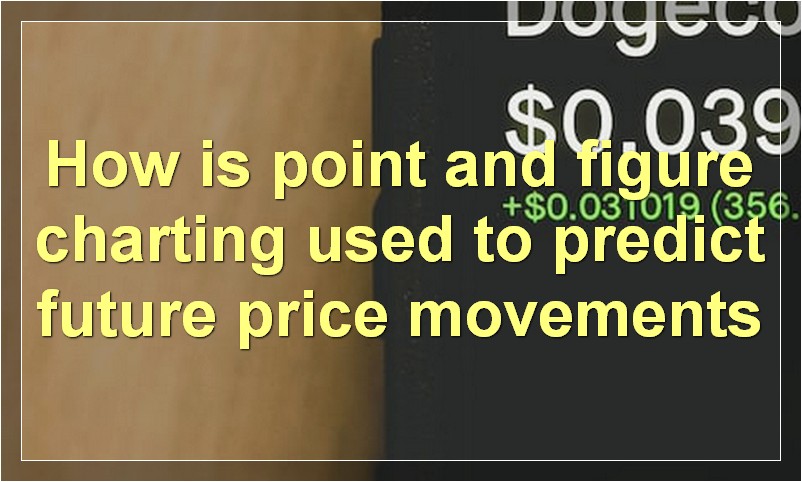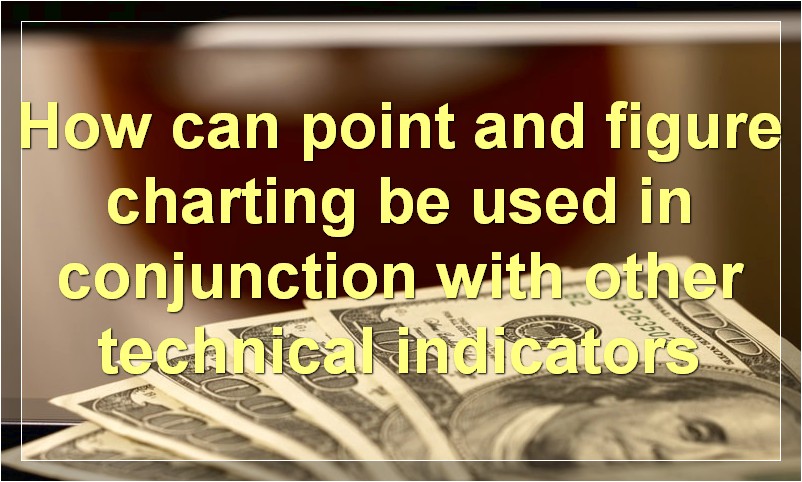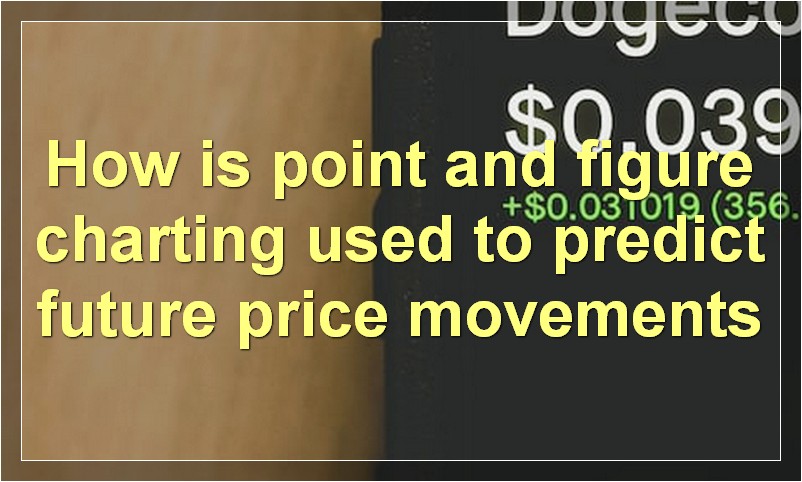If you’re not using point and figure charting in your trading, you’re missing out.
What is point and figure charting
Point and figure charting is a method of technical analysis used by traders to predict future price movements in the market. This method is based on the identification of price patterns and trends in the market, which can be used to make predictions about where the market will move in the future.
Point and figure charting is a powerful tool that can be used by traders to make informed decisions about their trading strategy. This method can help traders to identify key support and resistance levels in the market, as well as potential entry and exit points.
How is point and figure charting used to predict future price movements

Point and figure charting is a form of technical analysis that is used to predict future price movements in the markets. This method of charting uses a specific set of rules to identify price patterns that can be used to forecast where prices are likely to head in the future.
One of the main advantages of point and figure charting is that it can be used to identify trends in the markets before they become apparent on other types of charts (such as bar or candlestick charts). This allows traders to get in on the trend early and potentially make bigger profits.
Another benefit of this type of charting is that it is not as affected by short-term volatility as other forms of technical analysis. This means that point and figure charts can be useful for identifying longer-term trends that might not be apparent on other types of charts.
If you are interested in using point and figure charting to improve your trading, there are a number of resources available online that can help you learn more about this technique.
What are the pros and cons of point and figure charting
There are a few pros and cons to point and figure charting that are worth mentioning. On the pro side, this type of charting can be very helpful in identifying support and resistance levels for a security. This can give traders an edge in making buy and sell decisions. Another pro is that point and figure charting can be used to identify trends, which can also be helpful in making trading decisions.
On the con side, one downside to point and figure charting is that it can be somewhat subjective. What one trader perceives as a support or resistance level may not be seen the same way by another trader. Also, this type of charting does not take into account volume, which can be an important factor in making trading decisions.
How does point and figure charting differ from other types of charts
Point and figure charting is a type of technical analysis that uses a special method of plotting price movements. The technique is used to identify potential reversals in the market, as well as to assess trend strength. Point and figure charting differs from other types of charts in a few key ways.
For one, this method does not use time as a unit of measurement. Rather, price changes are plotted based on units of movement. This means that point and figure charts can be used to identify patterns that may not be apparent on other types of charts.
Another key difference is that point and figure charting only plots price changes that exceed a certain amount. This is done in order to filter out “noise” and make it easier to identify meaningful trends.
Overall, point and figure charting can be a helpful tool for traders who are looking to gain a better understanding of market movements. While it does have some limitations, the technique can be useful for spotting potential reversals and assessing trend strength.
What are some common misconceptions about point and figure charting
There are a few common misconceptions about point and figure charting that can lead investors astray if they’re not careful.
One misconception is that point and figure charts only show price movement in one direction. This isn’t the case – point and figure charts can show price movement in both directions.
Another misconception is that point and figure charts are only used for short-term trading. While it’s true that point and figure charts can be used for short-term trading, they can also be used for long-term investment purposes.
Finally, some investors believe that point and figure charting is too complicated to bother with. While there is a bit of a learning curve, point and figure charting isn’t any more difficult than using other types of charts.
How can point and figure charting be used in conjunction with other technical indicators

When it comes to technical analysis, there are a variety of different tools and indicators that traders can use in order to make informed decisions. One of the more popular methods is point and figure charting, which can be used in conjunction with other technical indicators in order to get a better idea of market trends.
Point and figure charting is a type of charting that uses price movements to generate buy and sell signals. This method of charting is often used by day traders and swing traders, as it can provide a clear and concise picture of market movements.
In terms of using point and figure charting in conjunction with other technical indicators, one of the most popular combinations is using it with support and resistance levels. By identifying key support and resistance levels on a point and figure chart, traders can then look for breakouts or reversals at these levels.
Another popular combination is using point and figure charting with moving averages. This can help traders identify trend changes, as well as potential entry and exit points.
Ultimately, there are a variety of different ways that point and figure charting can be used in conjunction with other technical indicators. By utilising this method of charting, traders can get a better idea of market movements and make more informed decisions.
What are some common mistakes made when using point and figure charting
When using point and figure charting, a common mistake is not starting with a base price. A base price is the starting point from which you will plot your points. Without a base price, your chart will be difficult to interpret.
Another mistake is not plotting every point. It is important to plot every point so that you can see the overall trend. If you leave out points, it will be difficult to tell if the trend is up, down, or sideways.
Another mistake is not using a consistent scale. When using point and figure charting, you should use a consistent scale so that you can easily compare one period to another. For example, if you are plotting daily prices, you should use the same scale for each day. If you use a different scale for each day, it will be difficult to compare the data.
Finally, another mistake is not labeling your axes properly. When labeling your axes, you should include the units of measure (e.g. dollars) and the time period (e.g. days). Without this information, it will be difficult to interpret your data.
How can point and figure charting be used to identify support and resistance levels
Point and figure charting is a method of technical analysis that uses a special graph to track price changes. This type of charting can be used to identify support and resistance levels, as well as trends.
One way to use point and figure charting is to look for patterns of support and resistance. These patterns can be used to predict where prices are likely to move in the future. Another way to use this type of charting is to look for trends. Trends can be used to help you make investment decisions.
Point and figure charting can be a helpful tool for investors. By understanding how this type of charting works, you can make better investment decisions.
What are some advanced techniques that can be used with point and figure charting
There are many different techniques that can be used with point and figure charting, but some of the most popular and useful ones include:
1. Using different timeframes: One of the great things about point and figure charting is that it can be applied to any timeframe. So, if you want to get a longer-term view of a market, you can simply use a longer timeframe chart. Conversely, if you want to trade shorter-term movements, you can use a shorter timeframe chart.
2. Applying filters: Another popular technique is to apply filters to your point and figure charts. Filters can help you identify trends, support and resistance levels, and other important market information.
3. Drawing trendlines: Trendlines are another great way to analyze point and figure charts. By drawing trendlines, you can better identify market trends and make more informed trading decisions.
4. Identifying reversals: One of the most important aspects of point and figure charting is identifying reversals. By correctly identifying reversals, you can enter and exit trades at optimal times.
All of these techniques can be used to improve your point and figure charting results. Experiment with different techniques and see which ones work best for you.
Where can I find more information on point and figure charting
Point and figure charting is a form of technical analysis that uses a specific charting method to predict future price movements. Point and figure charting is unique in that it does not use time as a variable, but rather only changes in price. This makes it a popular tool among traders who are looking to identify price patterns and reversals.

